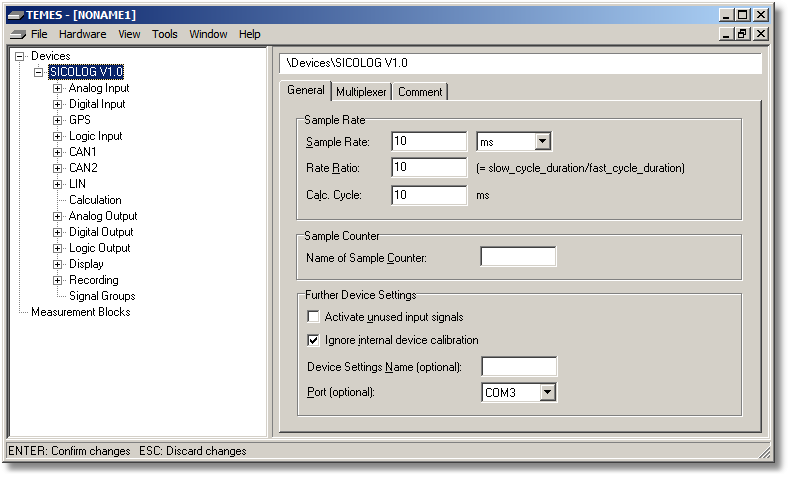TEMES 1.0

Figure 2-9: Parameter tree node <device> (General tab).
The sample rate is used for the fast recording cycle, and it is the rate which is used for the average values of the voltage and digital input signals (if the corresponding signal is not only recorded in the slow cycle).
The rate ratio is an integer multiple of the sample rate which is used for the slow recording cycle. Slowly recorded voltage and digital input signals are averaged with the rate of the slow recording cycle in order to get smoother signals. Note that only those fast samples are recorded by a data logger which also have a corresponding slow sample.
The calc. cycle represents the rate used for calculated signals and CAN/LIN signals.
The sample counter in this context is a 16-bit free-running wrap-around counter based on the actual fast sample rate and not based on a recording.
Activate unused input signals: This checkbox is used for additional TEMES parameters to enable the calculated signals even if these signals are not used as outputs. Otherwise, TEMES discards/deactivates unused input signals and simplifies the parameter set automatically. Alternatively, you can also add the unused signal to a signal group and transform it to a used input.
Ignore internal device calibration: This checkbox is used to ignore the internal device calibration. The SICOLOG/SICO3/USBDL1 are the only three devices with an additional calculation complexity when this checkbox is turned off. On the other hand, when this checkbox is turned on, the same look-up tables for the SICO2 and DL16CAN can be reused (yielding a smaller parameter set on the device).
The device settings name is an optional entry with no further effect in the parameter set.
The port has also almost no effect except that the programming is slightly faster (because the port has not to be searched).